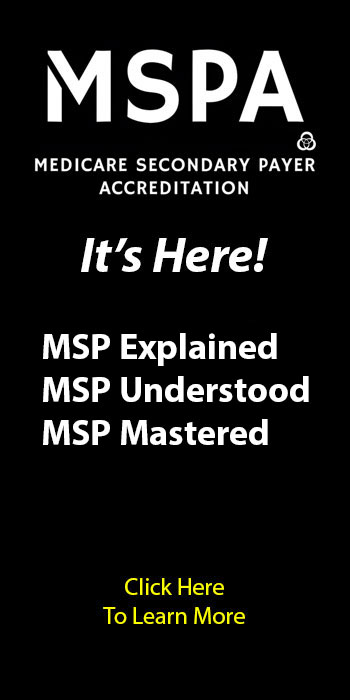
Welcome to the future of work, post the COVID-19 pandemic, where remote work and virtual collaboration have become prevalent, and the importance of effective communication cannot be overstated. Miscommunication can lead to delays, errors, and frustration, ultimately hindering productivity and creating unnecessary hurdles. By adopting the following strategies, organizations can navigate the challenges of workers’ compensation communication with greater efficiency and success.
First and foremost, sharing all the necessary information is crucial to prevent miscommunications. Too often, assumptions about what recipients already know lead to confusion and mistakes. To avoid this, it is essential to provide recipients with all relevant details. Providing stakeholders with relevant details includes sharing any contextual information they need or giving access to comprehensive resources where they can find the information. Additionally, clearly stating project deadlines or estimated completion dates and highlighting potential challenges allows all stakeholders to stay aligned and make informed decisions. Taking the time to share these details upfront can prevent time-consuming mistakes and unnecessary inquiries later. Furthermore, following up live discussions with an email containing action items and critical information is a valuable reference for all involved parties.
While email and chat platforms have their place, complex and nuanced discussions are best suited for live interactions. The State of Miscommunication study revealed that people encounter more miscommunications when using written mediums than in-person or live discussions. Engaging in face-to-face meetings or video calls is highly recommended to address messy problems, brainstorm innovative approaches to new projects, or deliver comprehensive feedback. Even a brief phone call can save significant time that would otherwise be spent on a lengthy back-and-forth email exchange. The richness of real-time conversations allows for immediate clarification, encourages collaboration, and reduces the chances of misinterpretation.
When utilizing email as a communication medium, it is crucial to craft clear and concise messages. While live discussions are preferred for complex topics, email is a valuable tool for conveying fixed information that people may want to reference later. It is essential to structure and organize emails to prevent email miscommunications. Begin by stating the objective of the email to provide recipients with context. Explicitly outline the action items you expect from the recipient and their deadlines. If applicable, communicate the actions you will be undertaking as well. Additionally, editing emails for conciseness and eliminating unnecessary phrases ensures the main message is easily understood. This approach may require more initial effort but saves time by reducing mistakes and subsequent inquiries.
While concise language is essential, it is important to consider how tone is conveyed in written communication. Plain language can sometimes be perceived as harsh or negative, leading to unnecessary tension or defensiveness. To overcome this, emojis can be used to effectively convey emotions and create a more positive tone in written messages. Nick Morgan, a communications expert, suggests that emojis can save valuable time by replacing sentences of explanation. Adding a simple smiley face at the end of a directive or suggestion for improvement can lighten the overall tone and ensure that positive intentions are conveyed.
Centralizing conversations in one place, whenever possible, is another effective strategy to prevent miscommunications. The use of multiple platforms, such as email, task management software, chat, and text, often leads to fragmented conversations and scattered information. Fragmented communication makes recalling and referencing previous discussions difficult, resulting in wasted time and potential misunderstandings. To streamline communication, it is recommended to choose one medium for each discussion and encourage all participants to keep their interactions within a single thread or designated space. Integrating notes from in-person meetings into the chosen platform provides a comprehensive reference for the project. However, a brief chat is still the fastest way to seek clarification and maintain momentum for quick questions related to projects.
With remote work and virtual collaboration as the new norm, investing in solid communication practices is imperative. Whenever possible, encouraging live discussions enables more prosperous and collaborative exchanges, fostering better understanding and alignment among team members. Organizations can prevent misunderstandings and costly errors by taking the time to ensure that all stakeholders have the necessary information. Writing clear and concise emails reduces the likelihood of confusion and ensures that recipients grasp the central message quickly. Incorporating emojis to convey tone helps to maintain a positive and constructive atmosphere in written communication. Lastly, keeping conversations centralized in one place eliminates the fragmentation of information and allows for easy reference, saving time and minimizing the risk of misinterpretation.
Effective communication is a crucial driver of success in workers’ compensation. It facilitates smooth workflows, enhances collaboration, and improves overall productivity. By adopting these communication strategies, organizations can navigate the challenges of workers’ compensation with greater efficiency and effectiveness, ultimately achieving better outcomes for all stakeholders involved.
In times of uncertainty, transparent and effective communication becomes even more critical. Organizations can foster a collaborative environment by prioritizing communication, mitigating misunderstandings, and ensuring everyone is working towards the same goals. Remember, communication is the name of the game, and by playing it well, we can overcome challenges, drive success, and build a stronger future for workers’ compensation.




